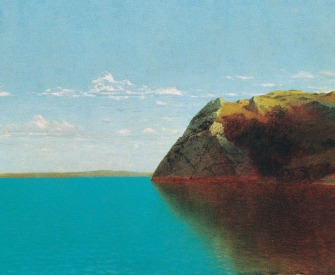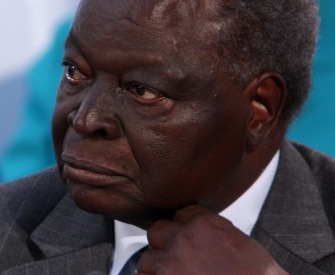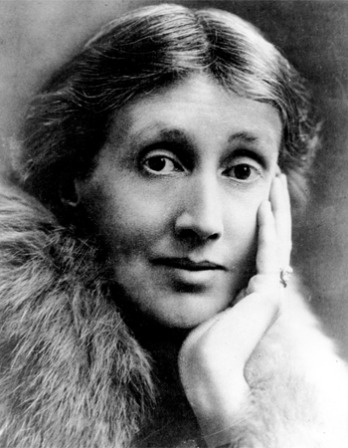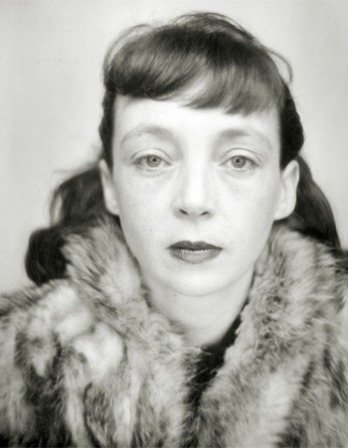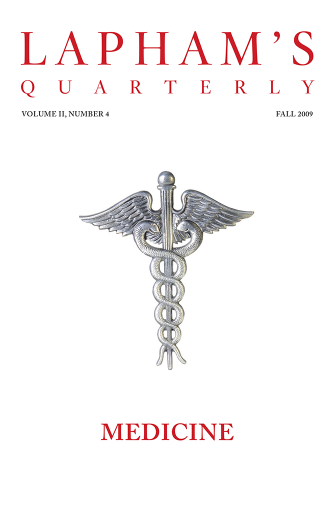Misfortune, n. The kind of fortune that never misses.
—Ambrose Bierce, 1906La Soledad
Our lives are directed by the whims of fortune. Salvation often comes from unexpected places.
By Robert Coover
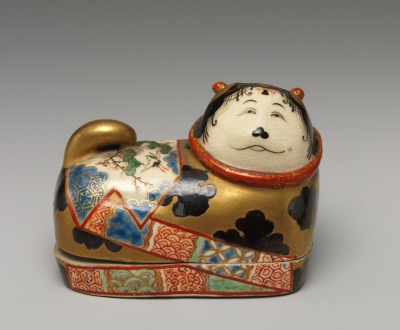
Incense box in the shape of a dog, Japan, c. 1840. Gift of Mrs. V. Everit Macy, 1923. The Metropolitan Museum of Art, Gift of Mrs. V. Everit Macy, 1923.
We’re in Catalonia on a certain Friday during the celebration of the execution of an accused Middle East terrorist, one of millions over the centuries, though by chance one more famous than most. The mythologized story of his life and death is depicted in the heavy wooden statuary, called pasos, being ported or rolled through the lively square below our fifth-floor hotel balcony by teams of strong-backed men peering out of eyeholes in hooded gowns. There are hundreds of pounding drums, representing the remorseless power of the authorities, a few bleating horns.
Now, with belief in the magical story fading, it’s merely a well-lit parade and tourist attraction, an excuse to haul statuary out of the cathedral penumbra into the electric light of night, have a party. Half a century ago, in the early 1960s, when I first witnessed this procession, it was more a gloomy reminder of the nation’s recent civil war. The Catalans had lost the war and had been placed under an oppressive occupation by church and state, both essentially foreign dictatorships. There had been heavy destruction, many martyrs, much grief. The garrote was a favorite Castilian tool for dealing with the vanquished and for quieting resistance, and fathers and sons had been lost to it. The streets were darker then; there was no party atmosphere. Some people whipped themselves in penance or walked the pavements barefoot, carrying crosses or other heavy symbolic objects; others, skipping the religious pageantry altogether, drank alone. Bitterness prevailed.
The occupying imperialists of the depicted troublemaker’s day executed him and thousands like him with what they had: wood and nails. They also had whips, and before nailing him up, routinely lashed him. All this is shown, in bloody detail, by the passing statuary. If they’d had drones, his executioners might well have skipped the uncertainties of trial and the messiness of hands-on killing by taking him out remotely with one of those flying death machines instead, though it’s not story material easily converted into wooden statuary. The odds of nailing him wouldn’t have been as good either, and the unavoidable collateral damage would have created the nuisance of more resistance, more executions. But drones are quicker and cleaner and there’s almost no risk for the shooter, only for those unlucky enough to be in the immediate neighborhood of the strike, persons mostly invisible and probably also guilty of one unforgivable crime or another like everyone else. Drones are why America can now close Guantánamo. Taking prisoners is an expensive luxury of the past.
It’s harder to build a redemptive tale around a drone victim (the spectacle of bodily ascent, for example, is not available except in metaphor), but it can be done. All it takes is a touch of magic added to the story, organized power, a general stupidity, and a run of luck. Luck is important, at least in the human story. Few are singled out to have their brief lives retold. The odds are against it, uncounted millions to one. Most of the world’s dead simply disappear as if they never were, whatever the occasional heroics. If the Islamic State prevails, its martyrs, including those of the recent Paris and Brussels suicide bombings (our route here has been made difficult by these gruesome disruptions), may be ceremoniously celebrated for a while, the imperialist strongmen and their local toadies demonized. But if, as is likely, the project fails, its martyrs will be forgotten as their cause is forgotten, perishing into the anonymity of body counts like the rest of us.
That doesn’t discourage the terrorists. They may or may not really believe in an afterlife with its promised nests of virgins. It’s simply that, frankly, from the perspective of eternity, a human life, especially an unlucky one, doesn’t have much meaning. Death happens to everyone, and the exact time of dying doesn’t really matter. Ending life as a sick, senile cripple is not a happily-ever-after scenario. Private suicides are an inglorious commonplace. Going out in a brilliant newsworthy flash can be seen as a lucky ending to a life, however short. Why wait for the worst? And anyway, one is probably preselected and has no choice.
There’s not much room for luck in the terrorists’ deterministic universe. Their god is in the quanta, and, though it’s all complexly unpredictable, everything has presumably been foreordained ever since the Big Bang, or what they would call the Creation. Quantum scientists may well have dropped a stitch, moving from micro to macro, but for fatalistic god-powered religions, it’s the science they’ve been looking for. In a deterministic universe, religions, responding to human desire, offer a local game of choice and chance, sin and redemption, a subsystem illusion of meaningful human interaction with destiny, temporarily ignoring their own beliefs in their gods’ implacable will, against which luck and human interventions are not options.
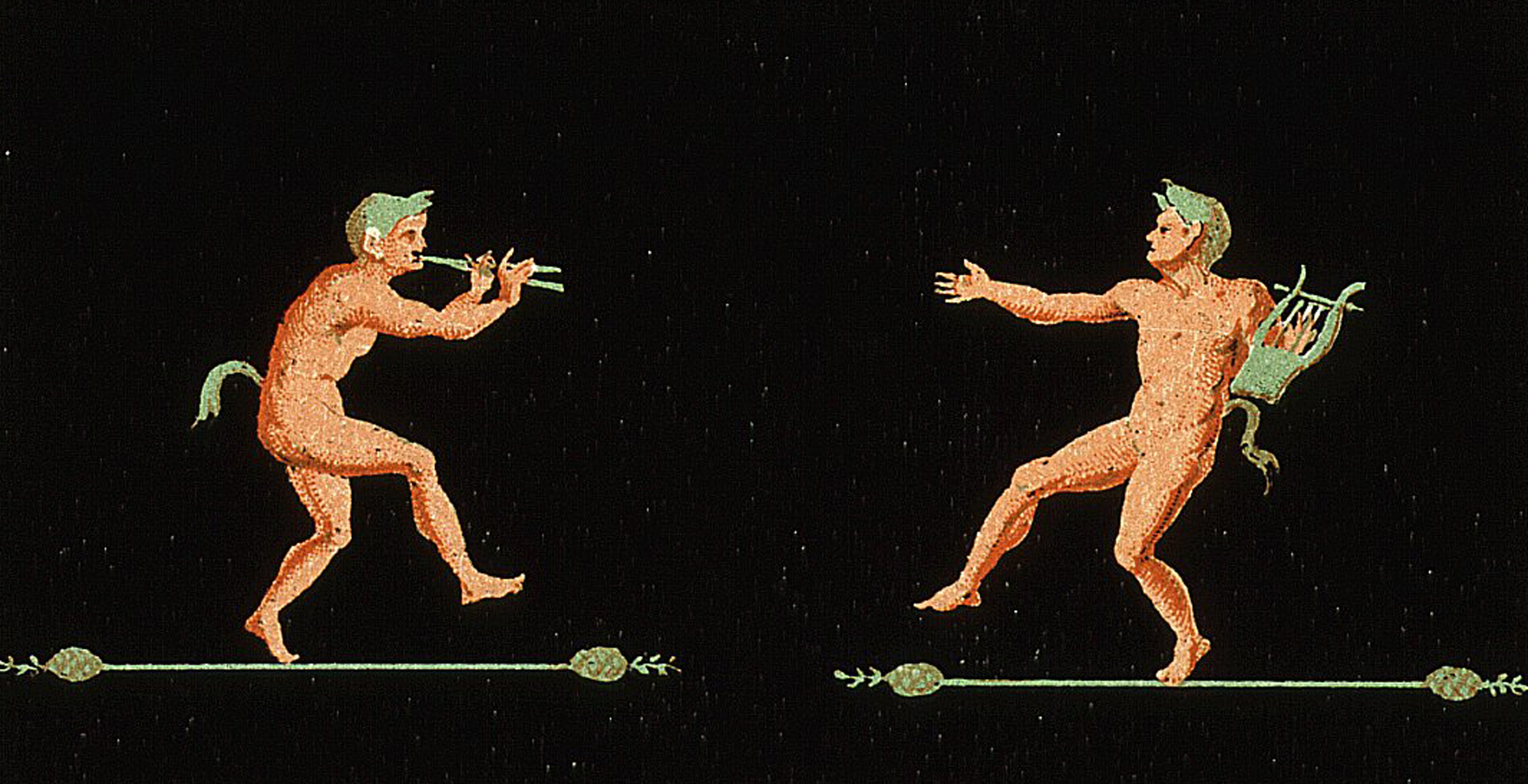
Tightrope walkers, reproduction of a Pompeian fresco from Houses and Monuments of Pompeii, by Fausto and Felice Niccolini, c. 1890. © Gianni Dagli Orti / The Art Archive at Art Resource, NY.
So many of the world’s conflicts are fought under the banner of one inflated godhead or another. Faced with oblivion and its erasure of meaning, humans make up wild stories as a buffer against despair. Not all stories are the same, there are comically passionate disagreements. Hatreds rise like boils on the body politic. Battles ensue, the horrors of war, etc.
All organized religions sponsor warfare, terrorism, torture, genocide, bloody executions, but in the West, they are mostly associated with the so-called Abrahamic religions—that of the renegade Jew being memorialized in the square below, for example (he is being stripped for his execution, though tradition will add a wooden loincloth to the statues), the self-annihilating Muslims of recent terrorist horror, the Christians with their colonial exploitation, corporate thuggery, and lethal weaponry. Warring siblings of the same dream-time father, who was himself a migrant, ready to sell his wife to the pharaoh and kill his son, if that’s what it took. Spain is notorious for its history of faith-driven violence, and all of these religions have had a part to play here in this country over the centuries, whether as killers or killed.
Religious beliefs, like political and social ones, are largely a family matter, at least until one is old enough to think for oneself, and by then other tribal forces may hold sway. The family one is born into is not a choice, it’s the luck of the draw. Geographic sustainability studies might indicate that some entire populations should never have been born at all, but from the individuals’ point of view, they’re here and that’s that. If one is born into poverty in an inhospitable part of the world, there’s not much one can do except throw rocks at the power elite, or else form a procession and emigrate to a better place. Of course, there are people already in that place who resent the intrusion, and who are resented in turn by the desperate intruders. The world belongs to everyone, doesn’t it? It’s just not fair. Strife arises. Gods get into it and make things worse.
Would it help if all the world were atheist? The world might be spared religion as an excuse for terror and mass destruction—piety’s wistful slaughter—but the disparity between the disenfranchised many and the lucky few would continue to bedevil the human race like a bad hand in poker. If religion didn’t exist, rage and resentment still would. Paranoia would. Fear. Cruelty. Greed. Ignorance. Despair before the void. Time plays a callous game with the human species. With all species actually, but only humans reflect upon it and give it a name. There is no obvious reason, other than fairy-tale ones, why humans should exist at all, and, lacking such a reason, people look for it in the lives and deaths of superpeople, like these oversized wooden characters of the Good Friday procession.
This same Easter week—just yesterday, on Maundy Thursday—death has come to a famous international soccer player, martyred by cigarettes, whose initials, by chance, are the same as those of the tormented figure being hauled through the square under our balcony. Though a Dutchman, he played, managed, lived, and died near here, so, on this day, he’s even more revered down in the square than that iconic wooden figure rolling by. He was himself a nonbeliever, disdainful of ritual and reverence, but his adoring fans are not. They need him. He brings some sort of grandeur to their luckless lives. Games around the world will have delayed starts tomorrow in tribute to him. His magical shirt number, in a game traditionally without magical shirt numbers, was 14, and the international match between the Netherlands and England on Tuesday will pause at the fourteenth minute in memoriam. Films projected on giant stadium screens will chronicle his life with all the gravity of images in a holy procession. Over and over, like the ritualized reenactment of a miracle, they will show his famous World Cup dribbling move, when he turned a defender and left him sprawling, a “turn” named after him and imitated now by thousands of footballing disciples around the world.
Soccer is all about movement. Words and photographs can’t capture it, and the apparatus of film has generally been too expensive and bulky. There have been many great footballers before him, but the footage that might immortalize them is mostly lacking. The Dutchman had the luck of maturing into the age of video, which is the age—now augmented by the ubiquitous handhelds with their digital video cameras and their worldwide phone and Internet connections—of the current generation of footballers and terrorists and tourists.
The square below is full of these little devices, though the crowd seems generally more interested in selfies than in the displayed martyrdom, which after all happened a long time ago, if it ever did. That’s all right. Footballers and terrorists are also fond of selfies. Selfies place you in a sometime and a somewhere, substantiating your momentary reality, however fleeting. Images were once rare and expensive, sometimes thought sacred, destined for museums, cathedrals, royal collections. Now there are countless images of everybody and everything. Except for text, they are the cheapest thing on the planet.
Which is not well. It was never assumed that it would last forever, but its sell-by date seemed so far in the future, it wasn’t something to worry about for a few more millennia. That’s rapidly changing. The earth’s fragile ecosystem is facing a perilous unstable future, but the imminent catastrophe—climate grief, massive species destruction, the uprooting of millions of people—is matched only by the worldwide dissociative response to it. Time is fast running out. Selfies will not save it. Luck won’t.
The solemn drumming builds as the last of the pasos are carried through the square below. The procession has gone on for a few hours, it is nearly midnight, but the square is brightly lit. On ordinary Friday nights, it’s a festive place. It is tonight, too. Not many are watching as the Holy Burial and the Holy Tomb with their twinned carved corpses slide by. The bars and restaurants are full. It’s party time. Much as it was for the occupying soldiers two millennia ago, gambling jocularly under the feet of the executed for their castoff rags.
The Holy Burial and Tomb are followed by the last of the Good Friday pasos: The Virgin of Solitude. La Soledad. The day ends, like so many in the deadly centuries since, with a mourning mother. Her son’s death has left her abandoned. Desolate. Her husband is also absent. He was old, maybe he died. Maybe he was keeping his head down during the authorities’ roundup. Or maybe, in his dotage, he simply forgot.
Good fortune turns aside destruction by a great god.
—Instructions of Ankhsheshonqy, 100 BCThis particular representation of the Virgin of Solitude is grandly gowned and standing on a golden chariot amid heaps of white flowers and burning candles, looking more like a pretty fairy-tale queen than a vulnerable heartbroken fifty-year-old Jewish mother. But, in the aftermath of the civil war, when so many Catalan mothers had recently lost husbands and sons to a lost cause, they identified with her and with her loneliness.
That’s not true tonight, but, even amid all the happy secularity of the square, Soledad does still resonate, not so much as a mythical mother of a god, but in her more primeval role as Mother Earth. Father Sky is off somewhere, fantasizing other possible worlds, and she is alone in her grief, mortally ill and suffering the unending cruelty and murderous discord of her reckless uncaring children. Her transient glamour seems to add to the tragedy. Religionists and scientists agree: there would seem to be virtually no escaping her mathematically determined destiny. As far as we know, she and we are utterly alone in a meaningless universe on a floating rock, doomed for extinction. La Soledad. Pobrecita. Who would not be weeping?

